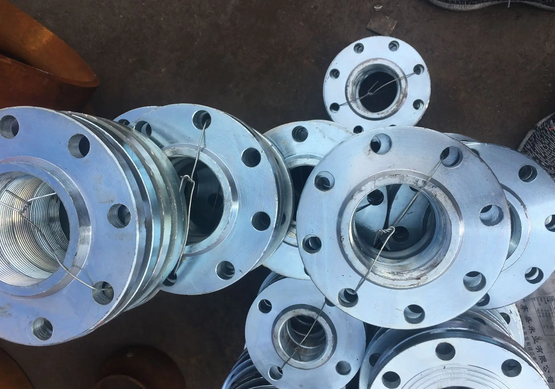Selection of water pump flange
The use and selection of pump flanges involve many aspects, including flange material, pressure rating, sealing form, connection method, and applicable scenarios. The following is a detailed analysis of these aspects:
1. Flange material
The material of the flange has an important influence on the corrosion resistance and overall performance of the water pump system. Common flange materials include cast iron, carbon steel, and stainless steel.
Cast iron flange: Suitable for water pump systems under general working conditions, the price is relatively low.
Carbon steel flange: has good strength and toughness, suitable for medium and low pressure systems.
Stainless steel flange: has excellent corrosion resistance, suitable for special media and high pressure systems. In special pipelines, such as pipelines containing corrosive media, stainless steel flanges are required to ensure the long-term stable operation of the system.
2. Flange pressure level
The pressure level of the flange needs to be selected according to the actual working pressure of the water pump system. Commonly used pressure levels are PN16, PN25, PN63, etc. When selecting, ensure that the pressure level of the flange is not lower than the working pressure of the system to ensure the safety and reliability of the system.
3. Flange sealing form
The sealing form of the flange directly affects the sealing performance of the system. Common sealing forms include concave and convex surface type, groove type, etc.
Concave and convex surface type: good sealing effect, but difficult to process. Suitable for occasions with high requirements for sealing performance.
Groove type: general sealing effect, but simple processing. Suitable for water pump systems under general working conditions.

4. Flange connection method
The flange connection methods are mainly socket welding and butt welding.
Socket welding: suitable for pipes with DN≤100mm. This connection method is simple and easy, but the pressure bearing capacity is relatively low.
Butt welding: suitable for pipes with DN≥100mm. The welding performance of butt welding flange is good, the pressure bearing capacity is strong, and it is suitable for high-pressure systems.
5. Applicable scenarios
When choosing a water pump flange, the specific usage scenario must also be considered.
Single flange: compact structure, easy installation, suitable for building drainage, water supply, fire protection, air conditioning and other systems. The applicable medium temperature generally does not exceed 200 degrees Celsius.
Double flange: stable structure, good sealing performance, suitable for process pipelines in petroleum, chemical, pharmaceutical, power and other industries. The applicable medium temperature can be as high as 300 degrees Celsius.
6. Other precautions
Tightening of flange: When connecting the water pump and the flange, it is necessary to ensure that the bolts of the flange are tightened, but not too tight, so as not to cause deformation of the flange or damage to the sealing gasket.
Sealing gasket: The selection of sealing gaskets is also very important. They must have good oil resistance and anti-aging properties, as well as good elasticity and mechanical strength.
Installation position: When the flange rubber joint is used at the inlet and outlet of the water pump, it should be located on the side close to the water pump, and should be installed between the water pump according to the metal reducer, and installed at the large diameter of the reducer.




